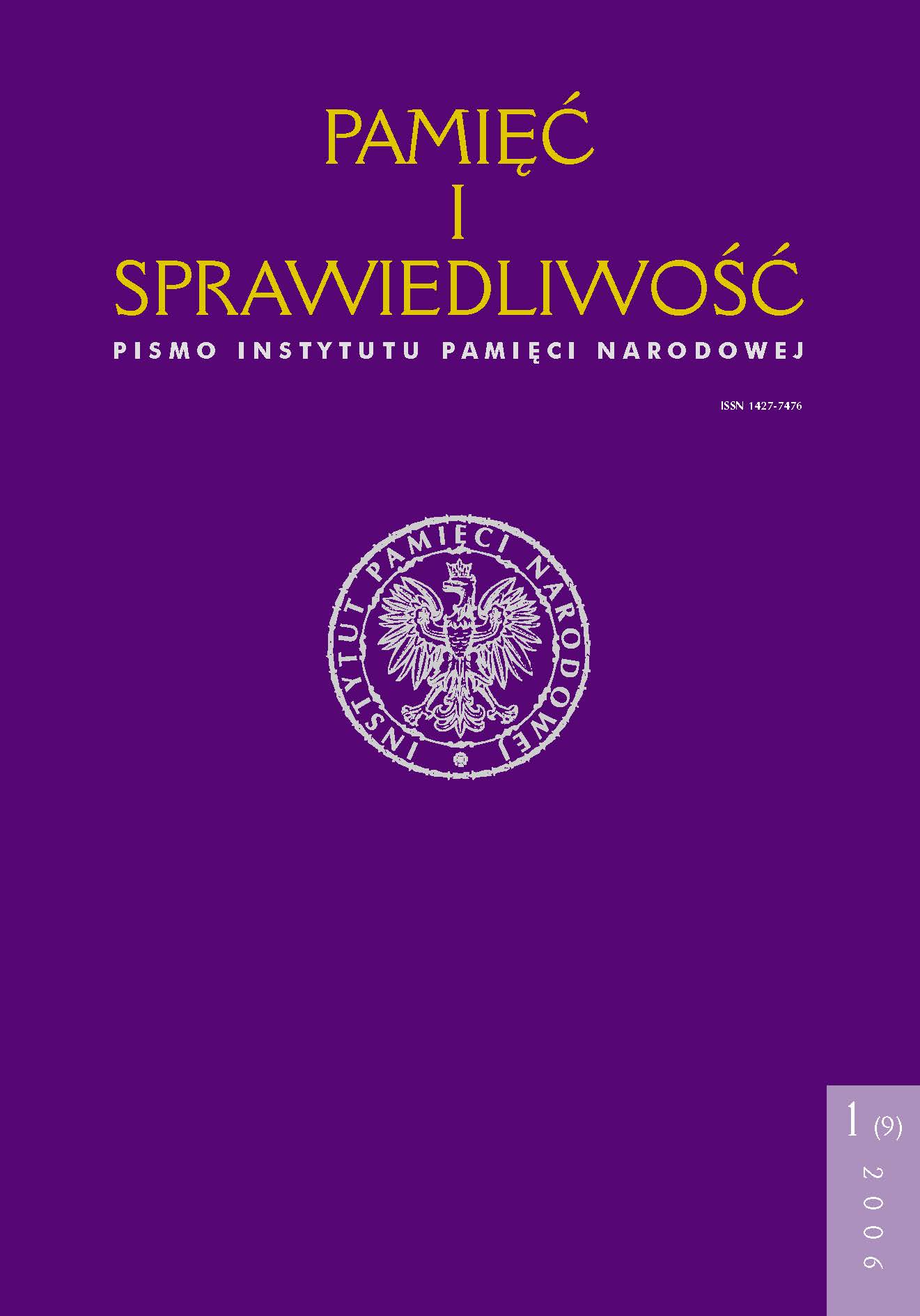Akcja „Červotoč” (Kołatek) Tajny współpracownik StB Stanislav Dvořák jako kurier „Solidarności Polsko-Czechosłowackiej”
Pamięć i Sprawiedliwość, Vol. 9 No 1 (2006), pages: 117-163
Publication date: 2006-06-30
Résumé
Although the dissidents of the Soviet Bloc declared their mutual solidarity in a number of proclamations, their real personal contacts were at the minimum due to the limited occasions to travel. Relations of the leaders of the Charter 77 and the Workers’ Defence Committee “KOR” were a certain exception. They managed to organize famous meetings at the Czechoslovak-Polish border already in 1987. A remarkable systematic cooperation was set up in the late 80’s and many personal meetings took place at “the green border”, not only in Karkonosze but also in Tatry, Jeseniky or Beskidy. Only a few of these meetings had any political meaning – many famous personalities used to meet there, public proclamations were published and many photographs of the participants were taken at the border stones and marks. Most of the other meetings happened in purpose to smuggle various samizdat materials and to prepare cooperative pressure actions. To the main organizers belonged young Poles from Wrocław who had already kept the contacts with Prague Charter 77 signatories from the early 80’s.
Nowadays it is possible for the first time to use a wider range of the State Security (StB) archive funds for historic research related to these events. Czechoslovak secret police made huge impacts into life of regime opponents – they checked their correspondence, bugged
their phone calls and flats and made their everyday life very difficult by all kinds of “arrangements for disintegration”. For monitoring and regulation of dissidents’ activities they also used a number of secret collaborators who outwardly presented themselves as regime opponents. One of them was a Czech language tutor at the Wrocław and Katowice Universities Stanislav Dvorák who used to operate as a main “connection” of Wroclaw’s Polish-Czechoslovak Solidarity and Prague Charter 77 signatories in a first half of 80’s. For the first time he collaborated with the secret police in 1981–1984 as counterintelligence
agent under a codename “Michal”, for the second time in 1989–1990 when as a ideal collaborator (“ideovy spolupracovník”) of StB he chose his codename “Jilemský”. The secret police by mean of him controlled and influenced the relations of Polish and Czech dissidents for several years. The real image of Stanislav Dvořák was fully disclosed to his friends from opposition first in 2003 when author of this study gained an
access to both files of “Michal” and “Jilemský” kept by secret police in 80’s. The subject of these files together with memories of witnesses makes the major base of this study.
Articles les plus lus par le même auteur ou la même autrice
- Łukasz Kamiński, Petr Blažek, Antoni Dudek, Andrzej Friszke, Idesbald Goddeeris, Anthony Kemp-Welch, Ilko-Sascha Kowalczuk, Mark Kramer, Petre Opriş, Vasil Paraskevov, Wojciech Polak, Aleksander Stykalin, [Ankieta] Czym była „Solidarność”? / Jaką rolę odegrała „Solidarność” w najnowszej historii? , Pamięć i Sprawiedliwość: Vol. 16 No 2 (2010)
- Martin Lacko, Tomasz Grabiński, Armia słowacka we wschodniej Polsce w 1941 roku , Pamięć i Sprawiedliwość: Vol. 3 No 1 (2003)
- Martin Lacko, Tomasz Grabiński, Masakra katyńska a Słowacja. Obraz tragedii w prasie słowackiej wiosną 1943 roku , Pamięć i Sprawiedliwość: Vol. 8 No 2 (2005)
- Pavel Suk, Tomasz Grabiński, Odkrycie masowych grobów w Katyniu oraz problematyka polska w prasie Protektoratu Czech i Moraw w okresie od kwietnia do czerwca 1943 roku , Pamięć i Sprawiedliwość: Vol. 8 No 2 (2005)
- Petr Blažek, Odmowa służby wojskowej w Czechosłowacji 1969–1989 , Pamięć i Sprawiedliwość: Vol. 4 No 2 (2003)
 Język Polski
Język Polski
 English
English
 Deutsch
Deutsch
 Français (France)
Français (France)
 Italiano
Italiano
 Русский
Русский


 PDF (Język Polski)
PDF (Język Polski)
